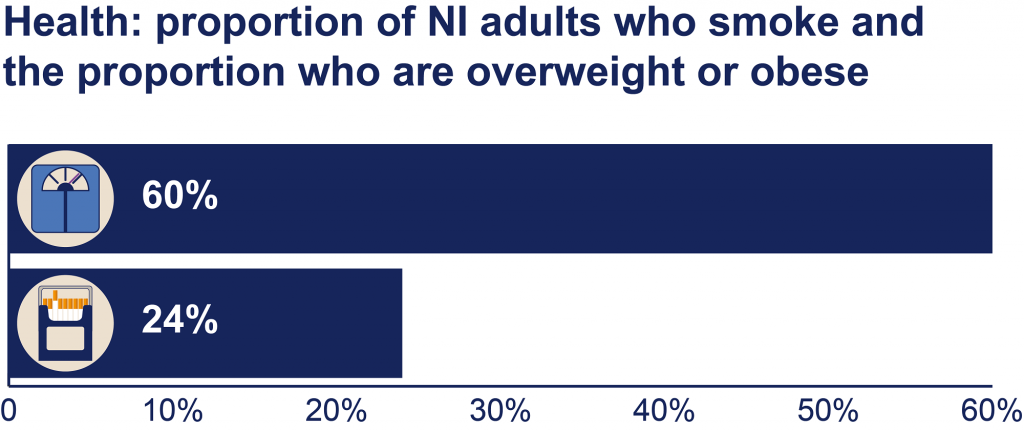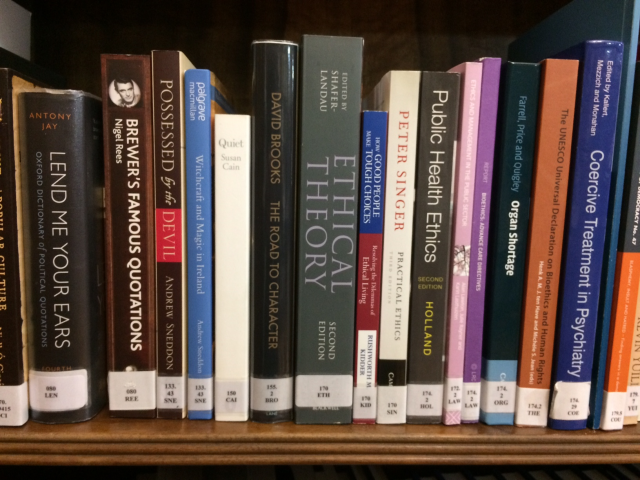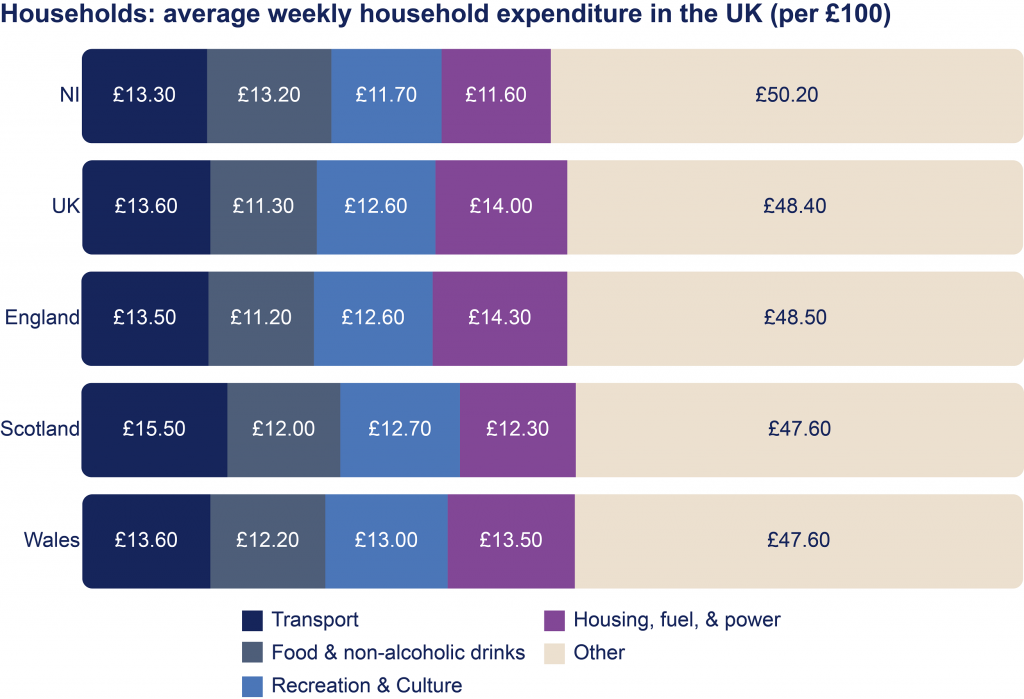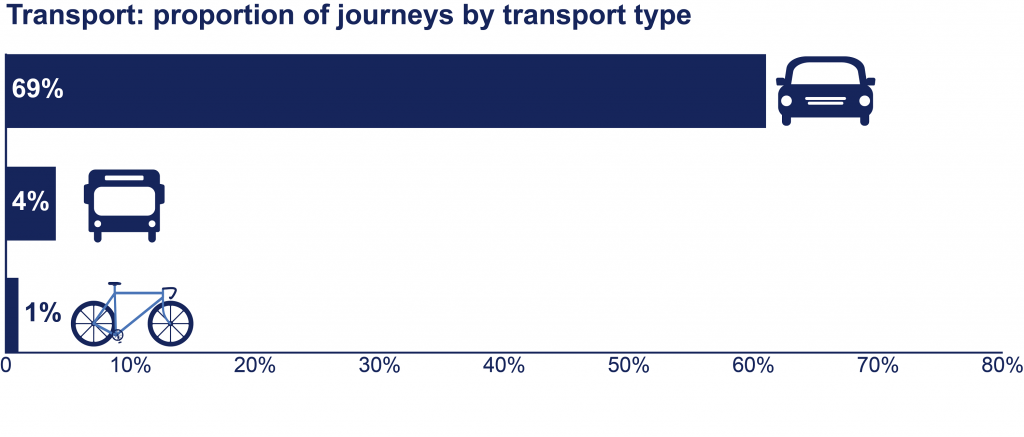Our blog has just published its 100th article. The Assembly Research and Information Service launched Research Matters in May 2016 in order to provide short, topical articles on recent research for Members of the Legislative Assembly (MLAs), but also to a wider audience. Since then, we have had 37,000 page views and over 20,000 visitors, and have aimed to publish research pieces on a wide range of policy areas dealt with by the Assembly. In order to mark 100 articles, we thought it might be interesting to provide a few facts and figures, focusing in particular on the number 100.
For example, Northern Ireland has an estimated 278 people aged 100 or over, almost 90% of whom are female; however, we have the lowest proportion of centenarians in the UK. If there were 100 people in Northern Ireland, 51 would be female and 49 male; 34 would be aged 24 or under and 15 people would be 65 or over. Life expectancy has changed radically over the last one hundred years; a child born today can expect to live for 82.4 years for girls and 78.1 for boys. A century ago, life expectancy in Ireland was 53.6 years for men and 54.1 years for women. In 1917, around 350 women for every 100,000 maternities died from complications of pregnancy or childbirth in the UK. Today, fewer than 10 women for every 100,000 maternities die from complications of pregnancy or childbirth.
In terms of the top 100 baby names in Northern Ireland, James and Emily rank first, while Blake, Dara, Megan and Rosa are all at number 100 in the list. In 1917, the top names were John and Mary, closely followed by Patrick and Bridget.

The 100th largest town in Northern Ireland (in terms of population size) is Doagh in County Antrim. If Belfast had 100 households, 34 of those would consist of one person, while eight would consist of five people or more. Out of the 100 most deprived areas of Northern Ireland, the top three are: an area called ‘East’ in Strabane (having risen from 12th in 2010); ‘Water Works 2’ in Belfast; and ‘Crevagh 2’ in Derry City. ‘Whiterock 2’ in Belfast, which was the most deprived in 2010, is now at number 23.
Health-related statistics are also revealing. Out of every 100 adults, 24 smoke; in fact, Northern Ireland has the highest proportion of current smokers in the UK. In every 100 adults in Northern Ireland, 60 are overweight or obese. Out of every 100 16 year olds in Northern Ireland, just seven achieve the recommended level of physical activity each week.

In terms of sport, the Northern Ireland record for the men’s 100m sprint is held by Jason Smyth with a time of 10.22s; the women’s record is held by Amy Foster at 11.40s. The Cookstown 100 motorcycle race is so named as it has traditionally taken place over 100 miles; however, when it first started in 1922 it was just 30 miles long.
Only three footballers have achieved 100 caps for Northern Ireland: Pat Jennings, Aaron Hughes and Steven Davis; this contrasts with the Republic which has eight: Emma Byrne, Damien Duff, Shay Given, Ciara Grant, Robbie Keane, Kevin Kilbane, John O’Shea and Steve Staunton. It seems that only one footballer has ever played for both Ireland and England: Jack Reynolds, who was born in Blackburn, Lancashire, but grew up in Ahoghill, County Antrim, died 100 years ago this year.
In the last 100 years, Ulster teams have won the All-Ireland Senior Gaelic Football Championship 17 times, with Down and Cavan winning five each. An Ulster side has yet to win the Senior Hurling Championship, though Antrim were runners up in 1943 and 1989.
During the Cricket World Cup in 2011, the Ireland team stunned England with the fastest hundred in World Cup history. Kevin O’Brien’s total of 113 off 63 deliveries contributed to one of the most spectacular sporting upsets in recent years. So far, only one Ulster rugby player has achieved 100 caps for Ireland: Rory Best. And finally on a sporting theme, the first ever 100-1 winner of the Grand National was from Northern Ireland: in 1928, Bill Dutton rode Tipperary Tim to victory. The famous horse was kept at Fernhill House in Belfast.

The 100th piece of legislation passed by the Northern Ireland Assembly was the Clean Neighbourhoods and Environment Act (Northern Ireland) 2011. The 100th Assembly research publication was a paper which examined clauses on anti-social behaviour within the Housing Bill 2002. The 100th Deposited Paper received in the Assembly Library was from the North/South Ministerial Council and was a Joint Communiqué on issues relating to Waterways Ireland.
The only bank in Northern Ireland which still issues a £100 note is the First Trust Bank; the note features an image of the Spanish Armada. On average, for every £100 spent by households in Northern Ireland, £11.60 goes on housing and £13.20 goes on food. The largest category of expenditure is transport, with £13.30 spent out of every £100. This contrasts with England, where the largest category of household expenditure is housing, with £14.25 spent out of every £100.

In 2017, median gross annual earnings in Northern Ireland were £25,999. By contrast, the average salary in 1917 was around £101 (or £7,901 in today’s prices).
What modes of transport does Northern Ireland use the most? For every 100 journeys that we make each year, 61 will be in a car, four on a bus and just one on a bicycle. If Belfast had 100 households, 38 would have no car or van. However, this contrasts with Mid Ulster, for example, which would have just 15.

A recent publication indicated that out of every one hundred Year 12 pupils, 83 achieved five or more GCSEs (or equivalent) at grades A*-C (in 2014/15). Over the eleven years of data there has been a considerable increase in this level of attainment, going from 61% at baseline (2004/05) to this latest figure of 83%. Approximately 100,000 pupils in all schools in Northern Ireland are entitled to free school meals and this represents about three in ten out of all pupils.
We learned today that over a million people visited the Giant’s Causeway this year. In fact, Northern Ireland has four sites in the top 100 tourist attractions in the UK in terms of visitor numbers: Titanic Belfast is at number 49, the Giant’s Causeway at 55, the Ulster Museum at 72 and Carrick-a-Rede rope bridge at 79.
Back in 1917, a feature film was made in Ireland for the very first time: A Girl of Glenbeigh, starring Kathleen Murphy as Kathleen O’Connor, was made by the ‘Film Company of Ireland’. Today, 61 out of every 100 adults go to the cinema at least once a year.
1917 was a tumultuous year in world history with the Bolshevik revolution taking place while World War I still raged. Many from Ulster and more widely across Ireland took part in the Great War. As just one example, the Irish poet Francis Ledwidge was killed at the Battle of Passchendaele; a book of his poems, Songs of Peace, was published the same year.
And there were smaller dramas closer to home. The Irish News carried a story on 30th May that the workers of the Roan Spinning Company in Coalisland had gone out on strike, complaining that they were paid below the standard rate of wages as recognised by the Board of Trade. ‘They were now working for four shillings for the men and two shillings for the women below the recognised standard of wages.’ On 7th June of that year, the paper reported that the ‘young lady assistants’ of Messrs Sinclair’s drapery establishment on Royal Avenue in Belfast had also gone out on strike, distributing ‘handbills which set forth their grievances’.
And perhaps most dramatically of all, in February of that year it was reported that a bull had escaped and ‘went on a rampage down the Falls Road before his head was put inside a bag and he was led away’, but not before he had run down Albert Street where ‘a woman and child just managed to get inside the door of Mr John O’Hare’s flesher’s establishment in the nick of time. The bull struck the door with his horns’. Luckily, the story ends well as ‘a number of constables managed to secure the dangerous visitor with ropes, and he was taken ‘under safe escort’ with his head enveloped in a bag to the Springfield Road barracks and placed in the yard from which he made several attempts to regain his liberty’.

